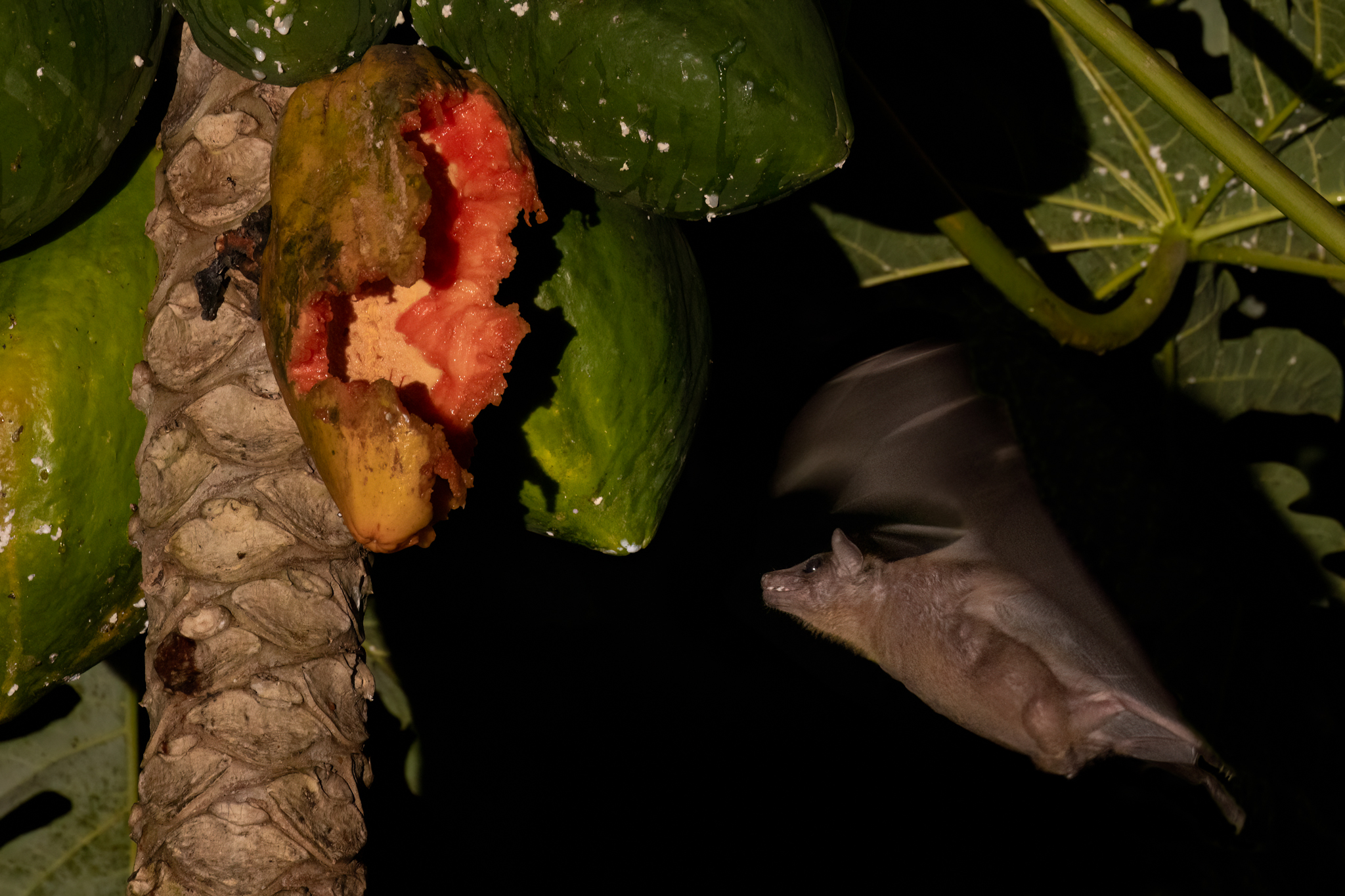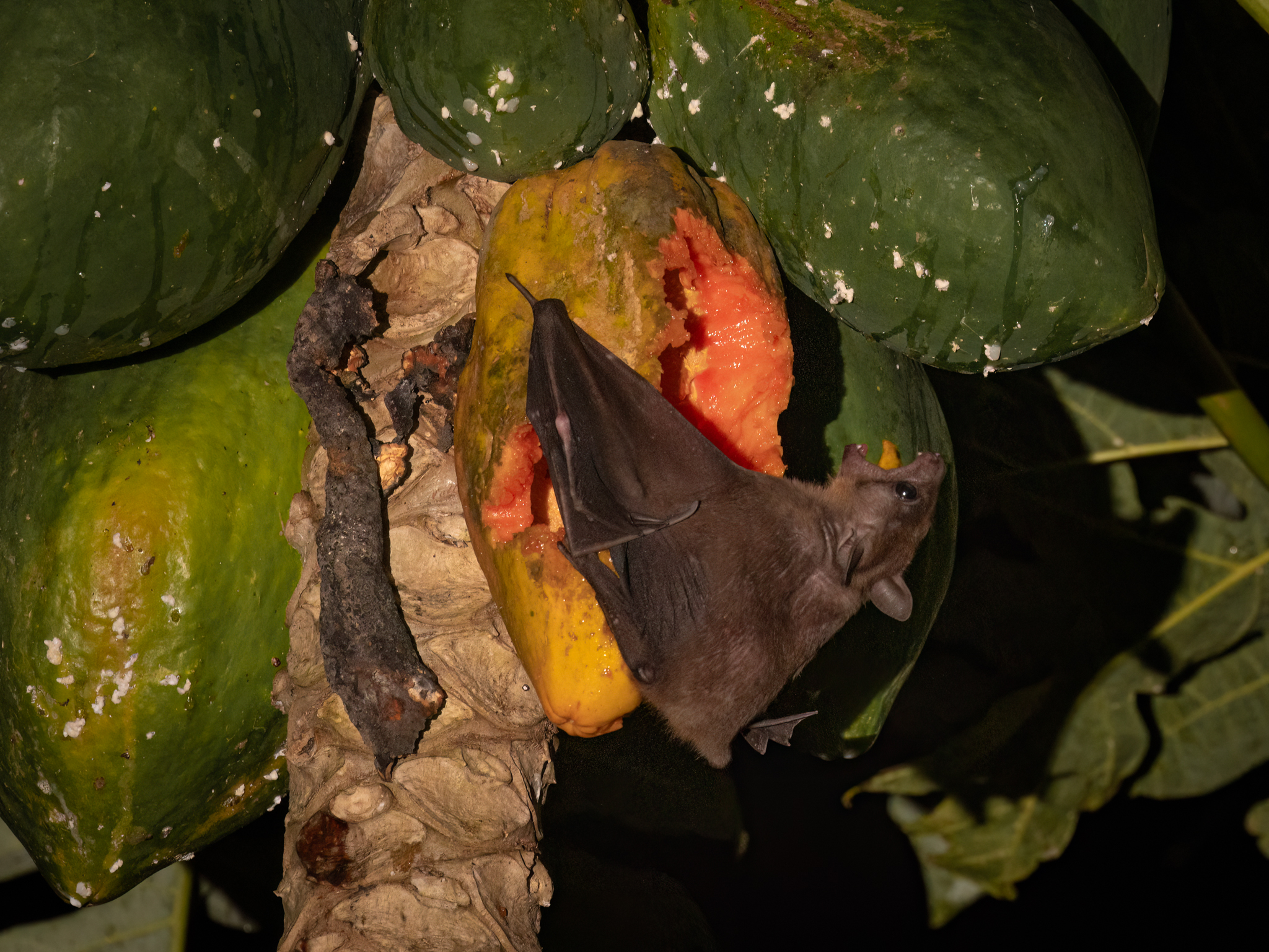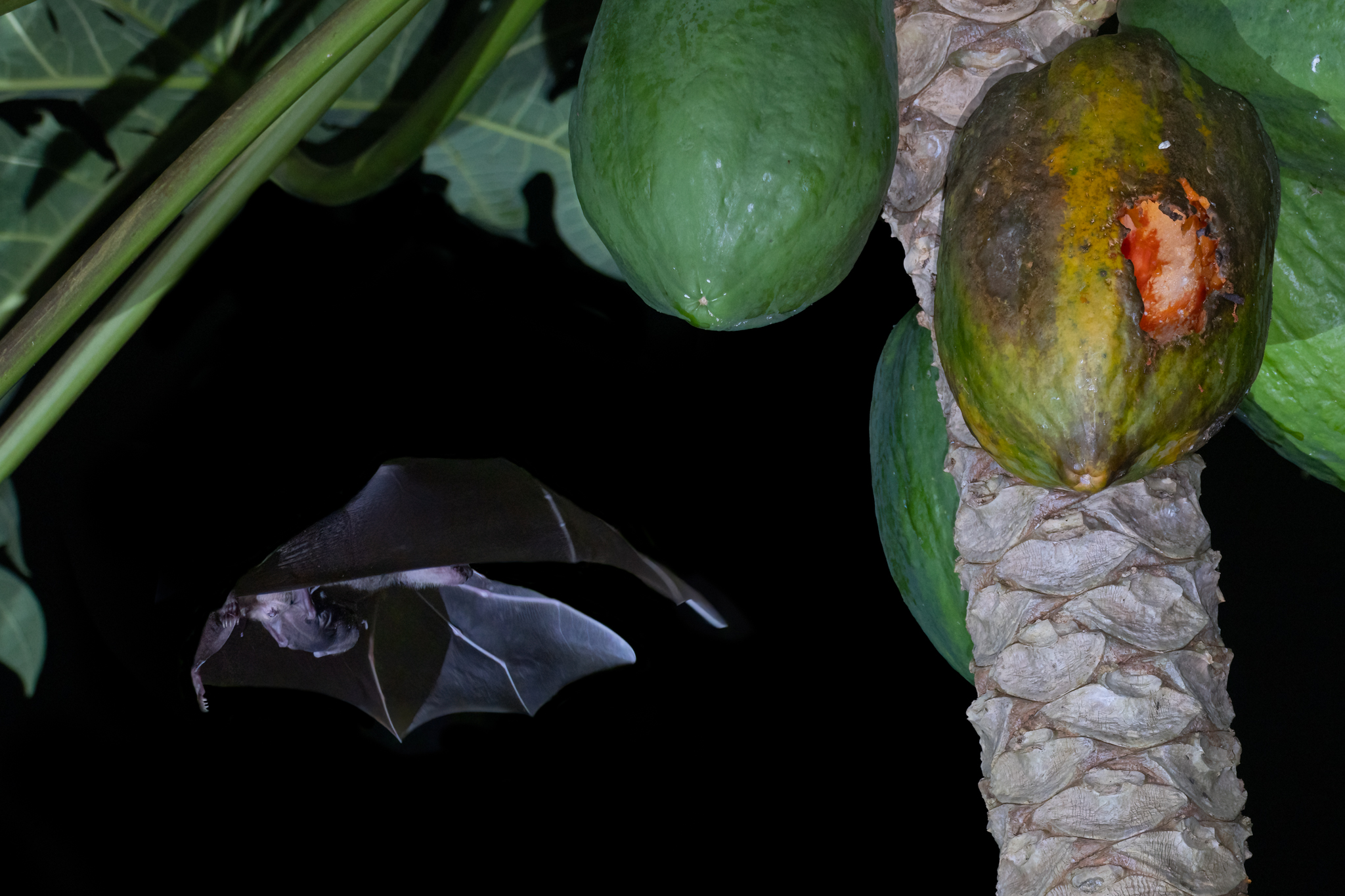Photographing Bats
about patience, perseverance and perfectionism
I’m a keen wildlife photographer and when we moved into our new plantation in the mountains of central Bali I wanted to capture any local wildlife I could find. I was not much into bird photography yet, and preferred reptiles, insects and any possible mammals. There are not many mammals in our plantation though; mostly just a couple of different squirrels, tree shrews and rats. Porcupine and civet cats are around, but are hard to find, let alone photograph. And then of course there are bats, lots of them! Sometimes large fruit bats visit our papaya trees, but the most common bats are smaller, and feed mainly on nectar, particularly from banana tree flowers.
Eventually I spent around 3 months photographing bats, almost every night and every night for anywhere between 3 to 6 hours, from just after dawn until sometimes 2 am… Here is that journey and the ever evolving results.
Lesser Long-tongued Nectar Bats
A relative small bat species, common throughout Southeast Asia and until northern Australia, they feed mainly on nectar of the banana tree flower.
I wanted to photograph those small bats on the banana flowers. Something that turned out fairly straight forward, using a tripod, a long lens and 1 or 2 speed lights. And of course a decent amount of patience… Once bats land on a banana flower they spend quite some time licking up nectar with their long tongues, from one flower to another. Plenty of time to focus and time for the speed lights to recharge, so you can take quite a few photos of a bat visiting a single flower.
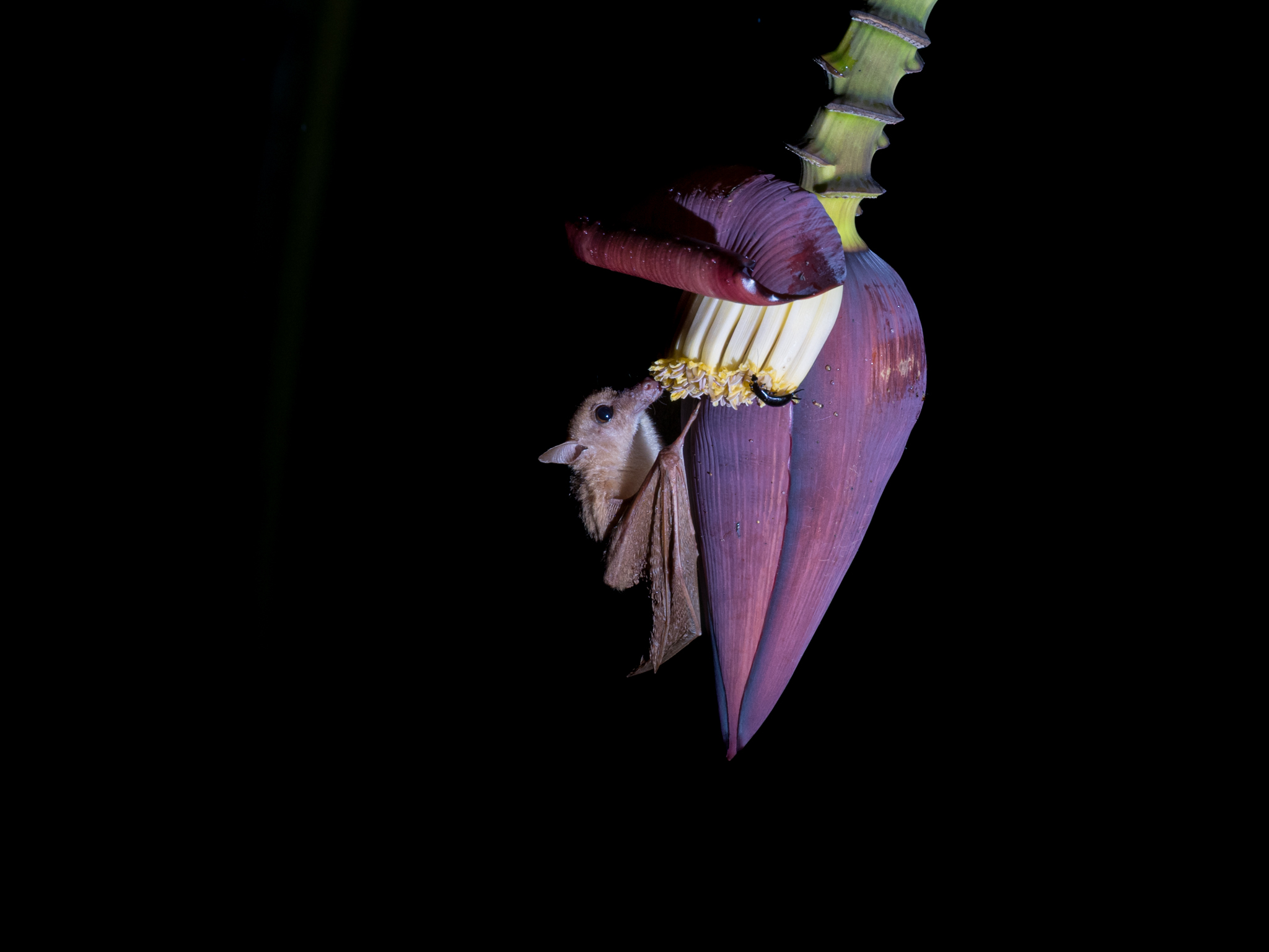
Of course I wanted to get closer and make more close-up photos. Fortunately our plantation used to be terraced rice fields, on a fairly steep slope. And as I wanted to be as much as possible on eye-level with the flower and bats, rather than photographing their bud from below, I just had to find a suitable flowering tree and put my tripod and camera on one or two terraces higher up. These first photos were taken at 400 mm focal length.
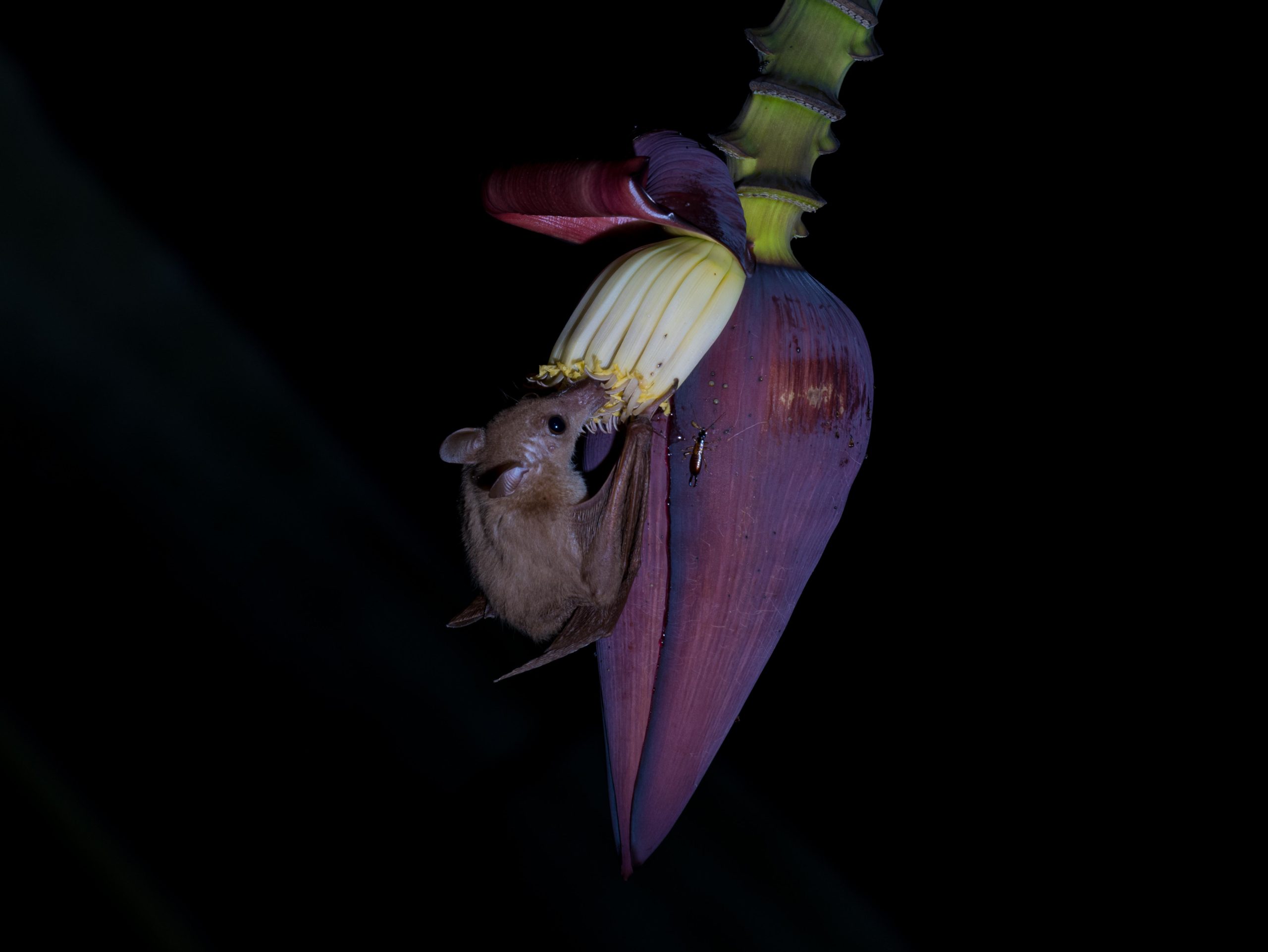
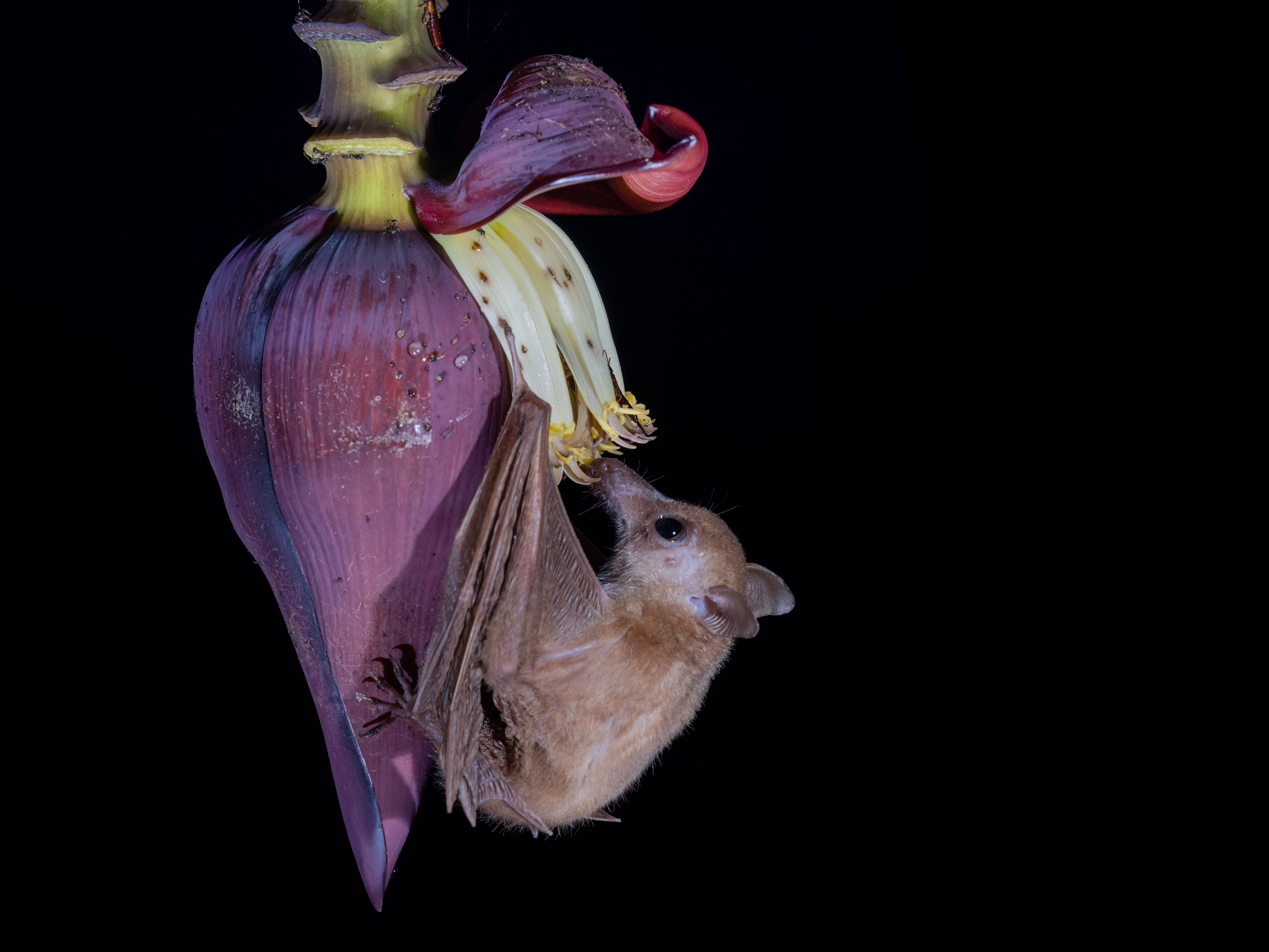
Soon I was happy with the results. Some of these photos I cropped, for an even closer look. I used a Canon R5, which allows for quite a bit of cropping while maintaining sharpness and details.
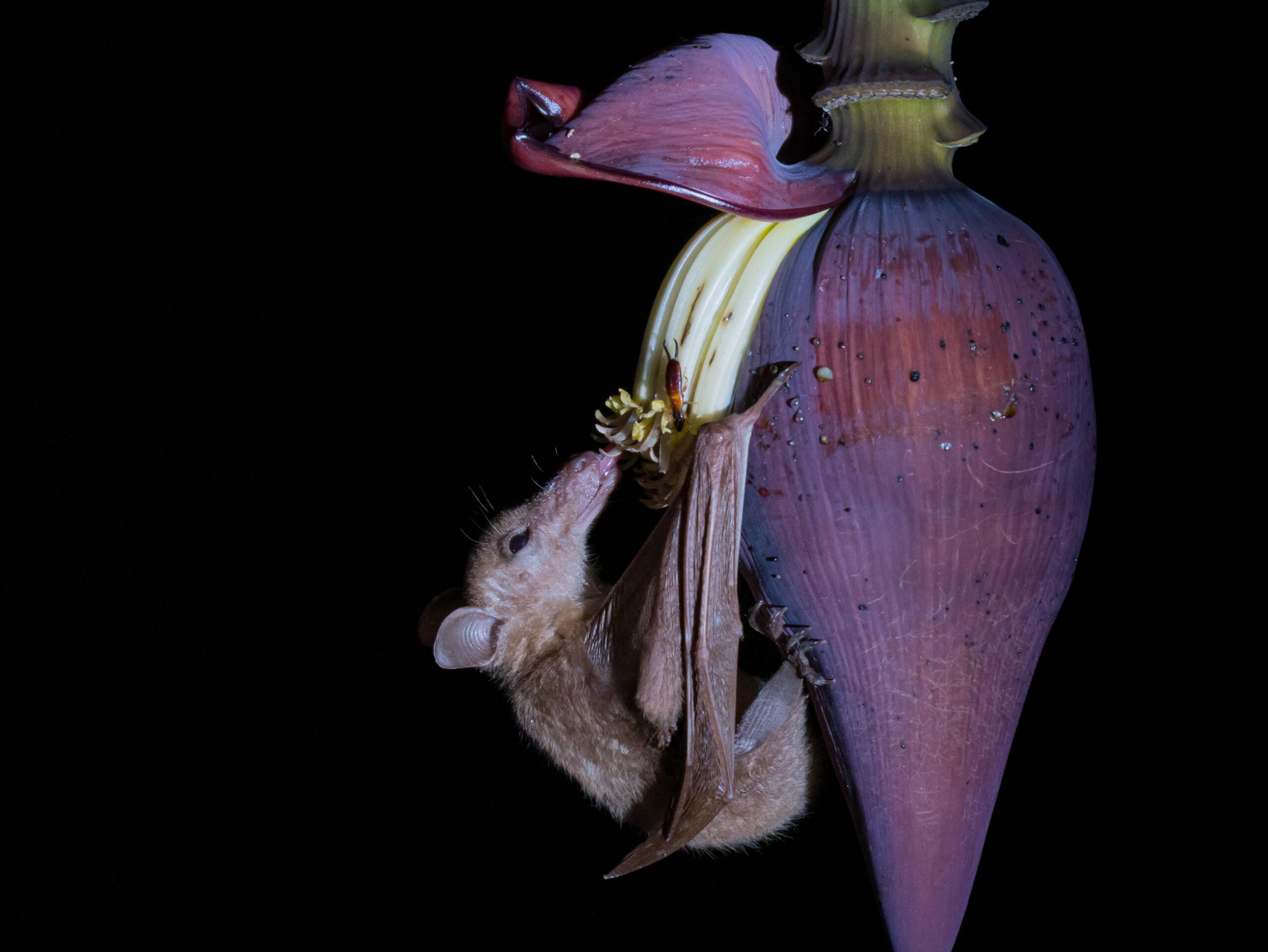
The logical next photos I wanted to take is the bats in flight, approaching a banana flower. That was a lot harder…
The challenge was that it was impossible to follow the flying bats at night with a camera and long lens, and actually focus. There’s simply no light, unless somebody uses a flash light to shine on the flying bat. Possible, but at the speed with which bats fly it is just not possible to get them in frame, focus and take a photo.
So I simply had to keep using a tripod and aim my camera a bit away from the banana flower. As I spent many nights observing and trying to photograph the bats I learnt that bats tend to approach a flower from the same side, where they can land direct right under the flowers. So that’s where I had to aim, and point my speed lights at. No time to focus, so I had to manually focus at the right distance.
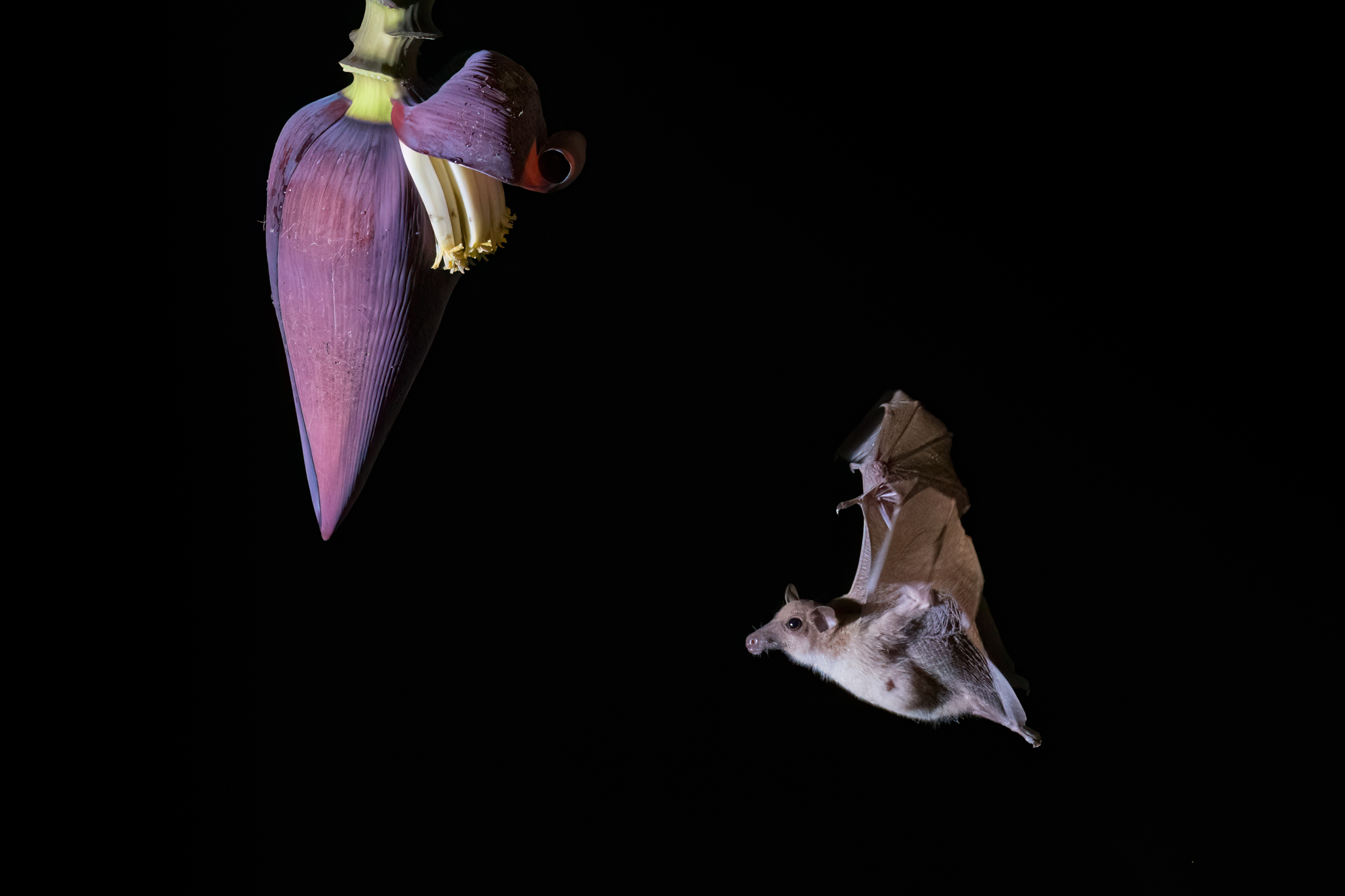
The challenge with this approach is that you have only 1 chance to push the shutter at the exact right time and the bat is at the exact spot I had aimed and focused my camera at.
On average perhaps only every half an hour or even longer a bat would visit a single banana tree flower. So even during my longest nights I only had about 10 chances to take a photo.
Needless to say that it took many nights before I learnt to push the trigger at the exact right time to get some decent photos…! Often I would be too slow, or too fast, and the bat would then not be in focus. Or too far from the flower. Other times the approach was slightly different than I anticipated, and then I’d end up with the bat half behind the flower…
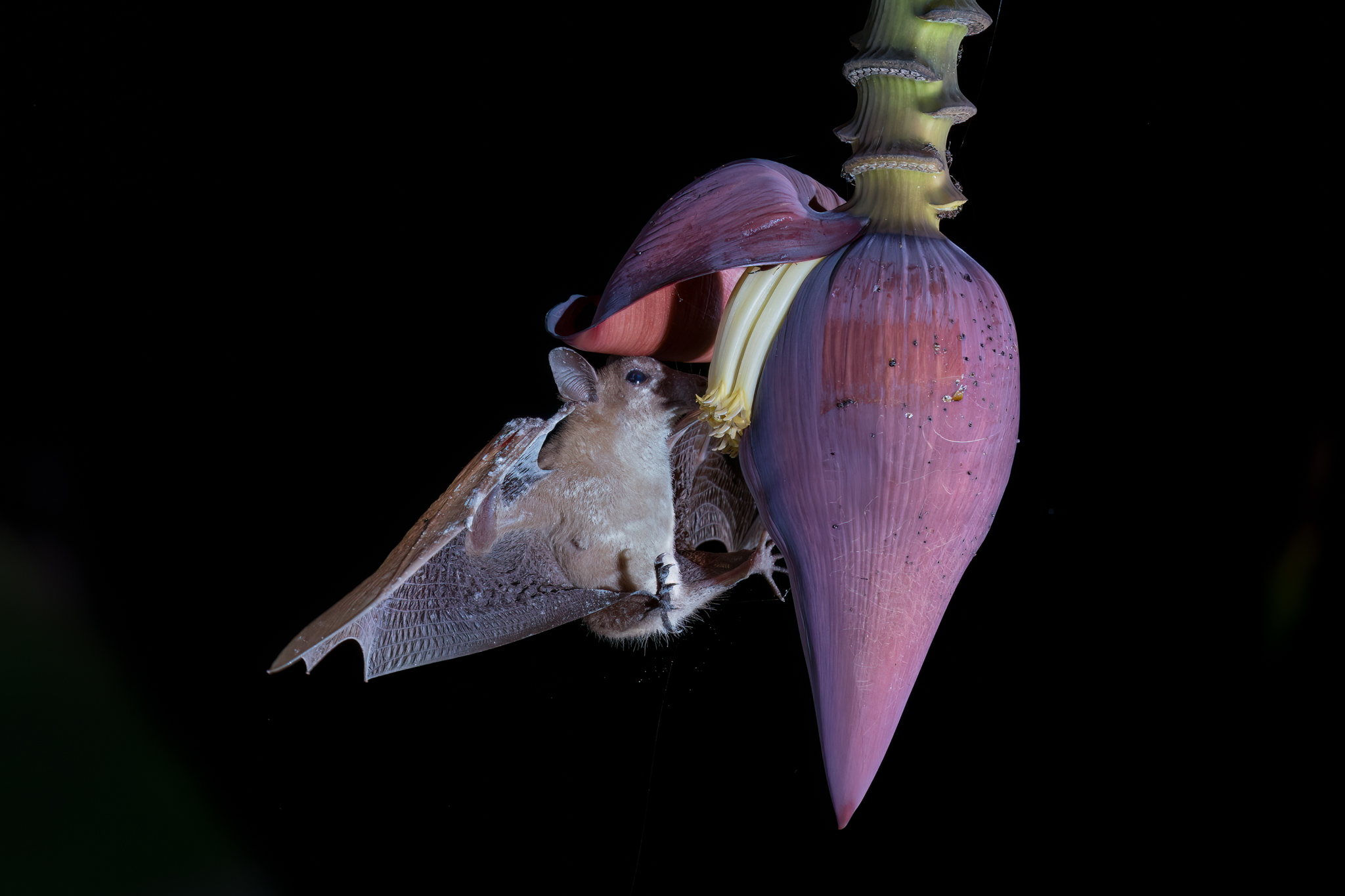
I spent many nights trying to perfect my camera set up, lights and timing to push the shutter. Eventually I started to have more success and photos I really liked.
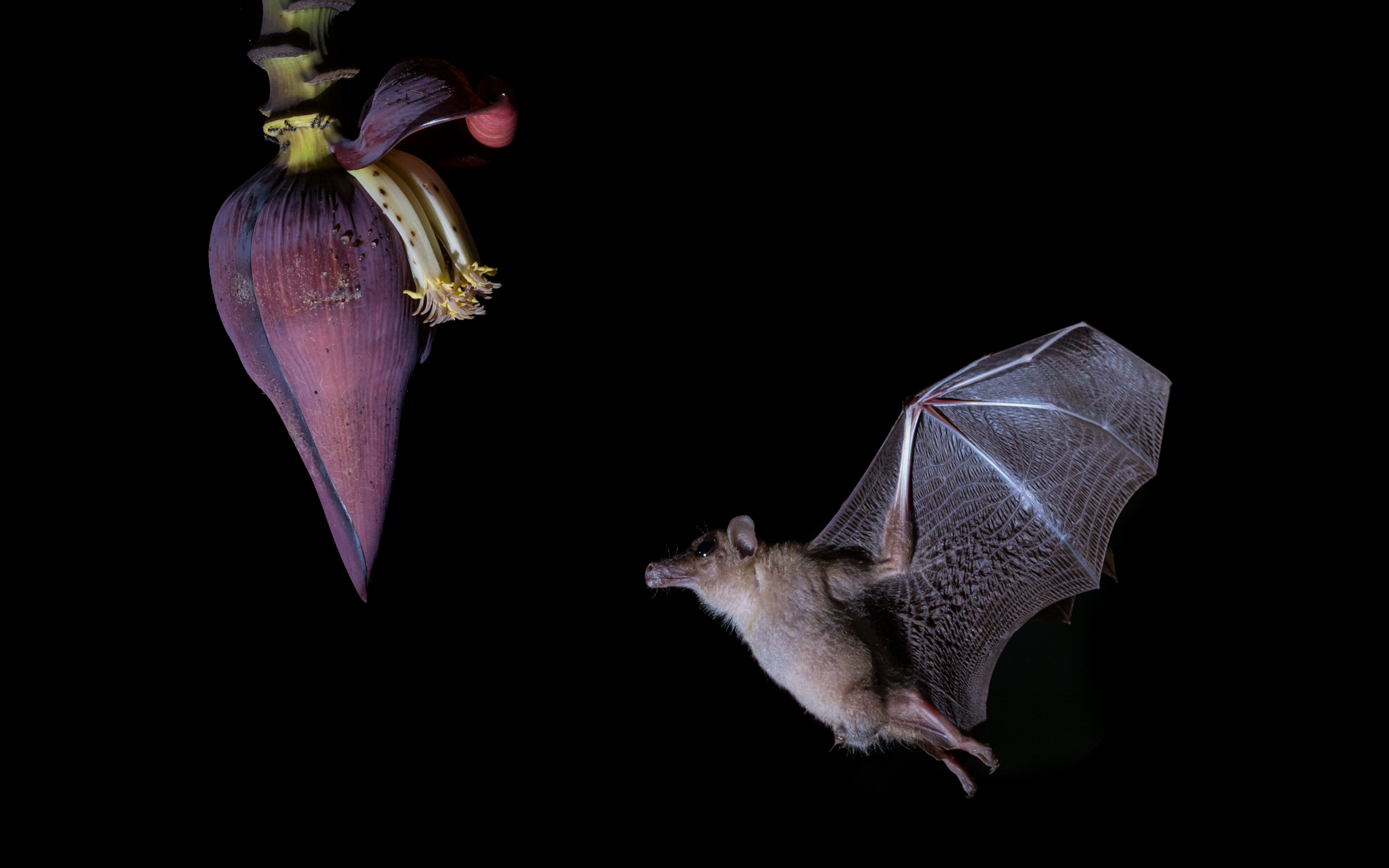
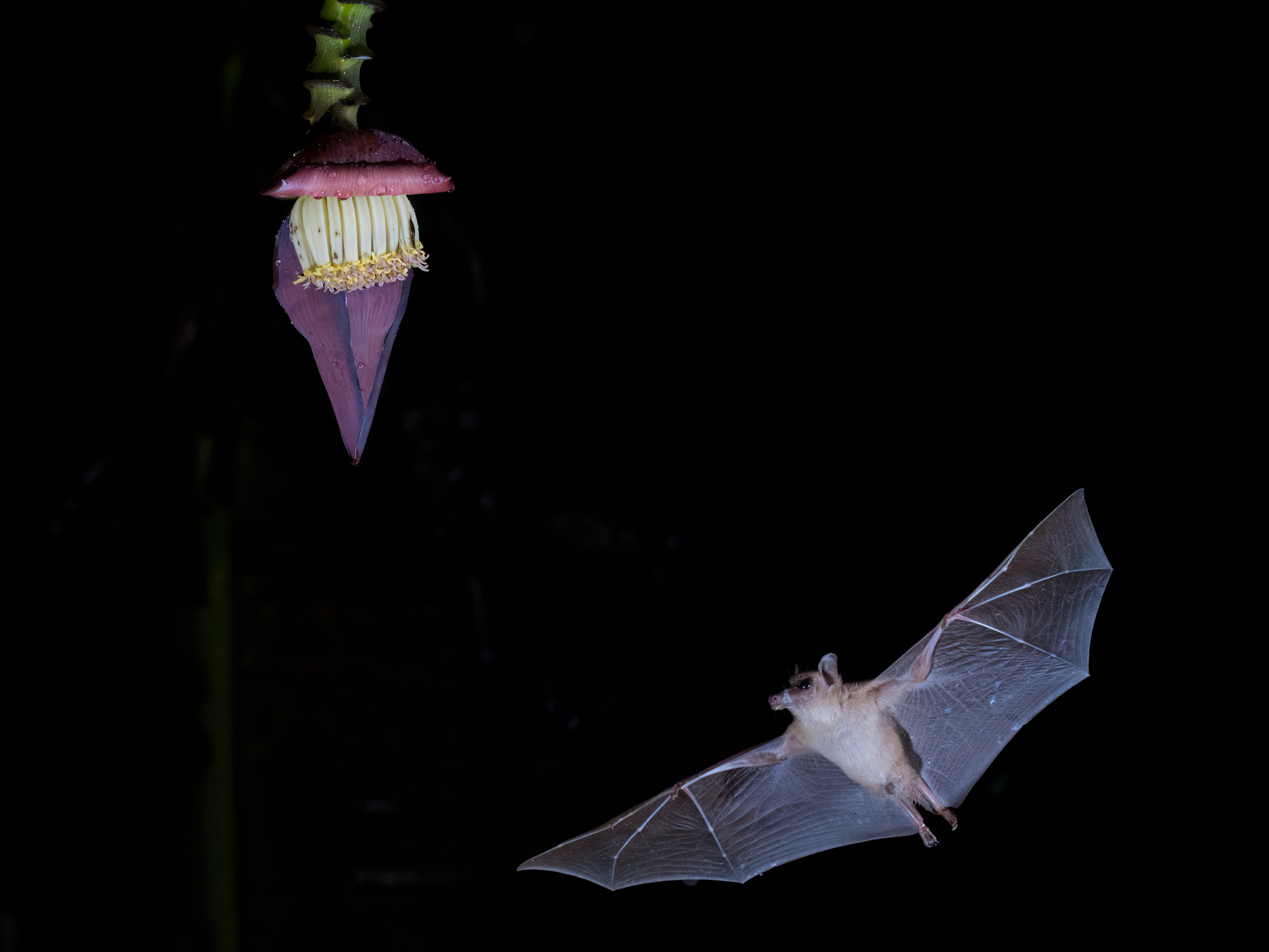
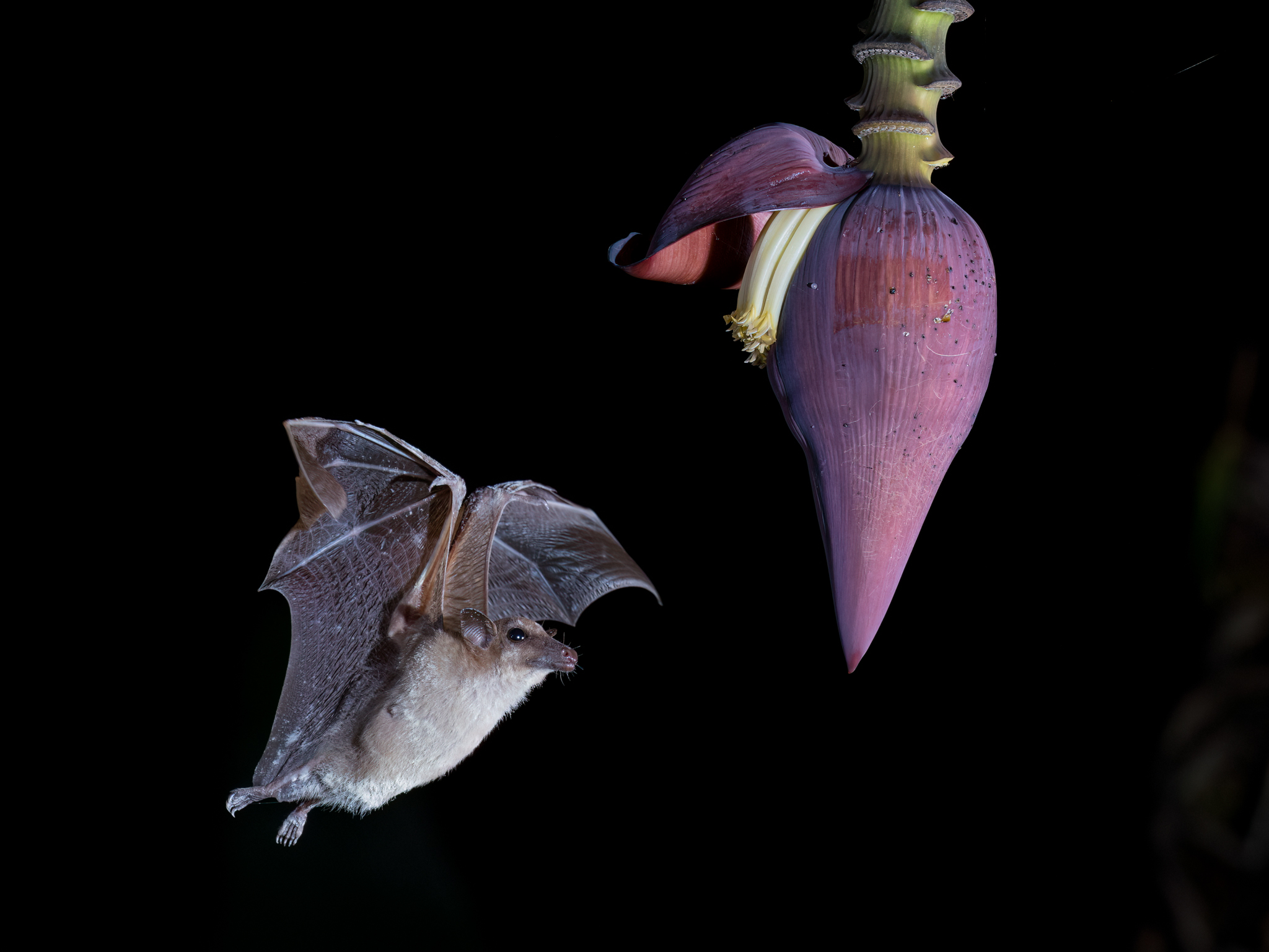
With these results in my pocket, I wanted to get closer and get photos with different angles. Photos with bananas in the photo as well, not only the flower. But that was almost impossible with only my standard tripod and from a distance of a couple of meters. Also using a lens of 400 mm means you don’t have much Depth Of Field in the photos, and usually only either the bat, flower or bananas in focus…
So I made large bamboo “tripod”, sometimes 4 meters tall, and attached my actual tripod on top of them. This way I could get the camera to within 1-2 meters from the flowers, and use a shorter lens for a wider point of view, larger Depth Of Field and the bat in the foreground.
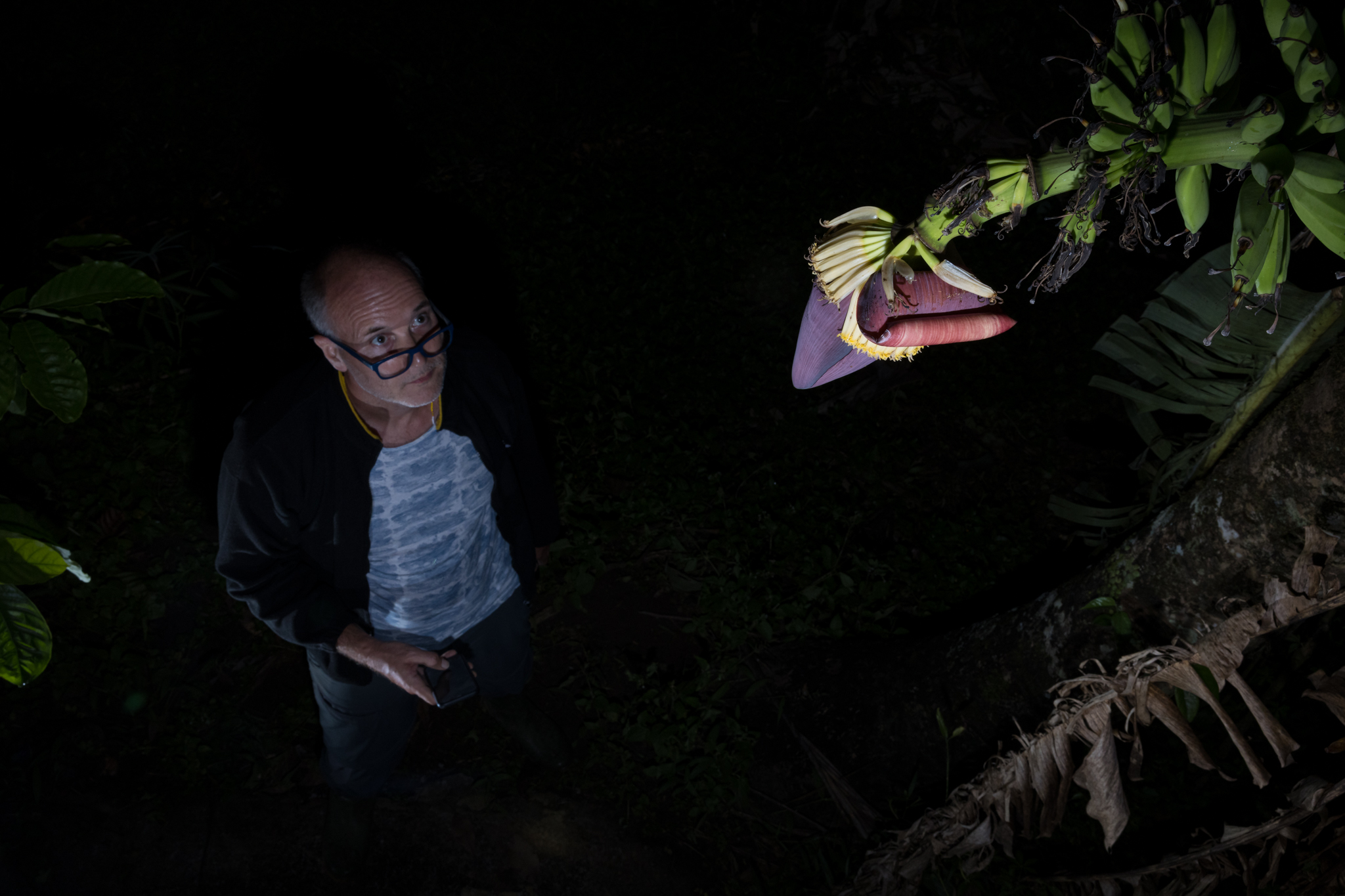
This approach required a lot of time, adjusting the camera’s angle, position of speed lights, manual focus distance, etc. And then I just took a chair, a small red headlamp and a remote trigger for my camera. I positioned myself so that I normally could see a bat fly towards the banana tree, and then try to trigger the camera at exactly the right time. With every approach of a bat I could take only 1 photo, as the speed lights don’t recharge fast enough to take more than one…

The next couple of nights I experimented with different angles, close-ups and also tried to photograph the bats leaving a flower. And hoping to capture them flying towards my camera…
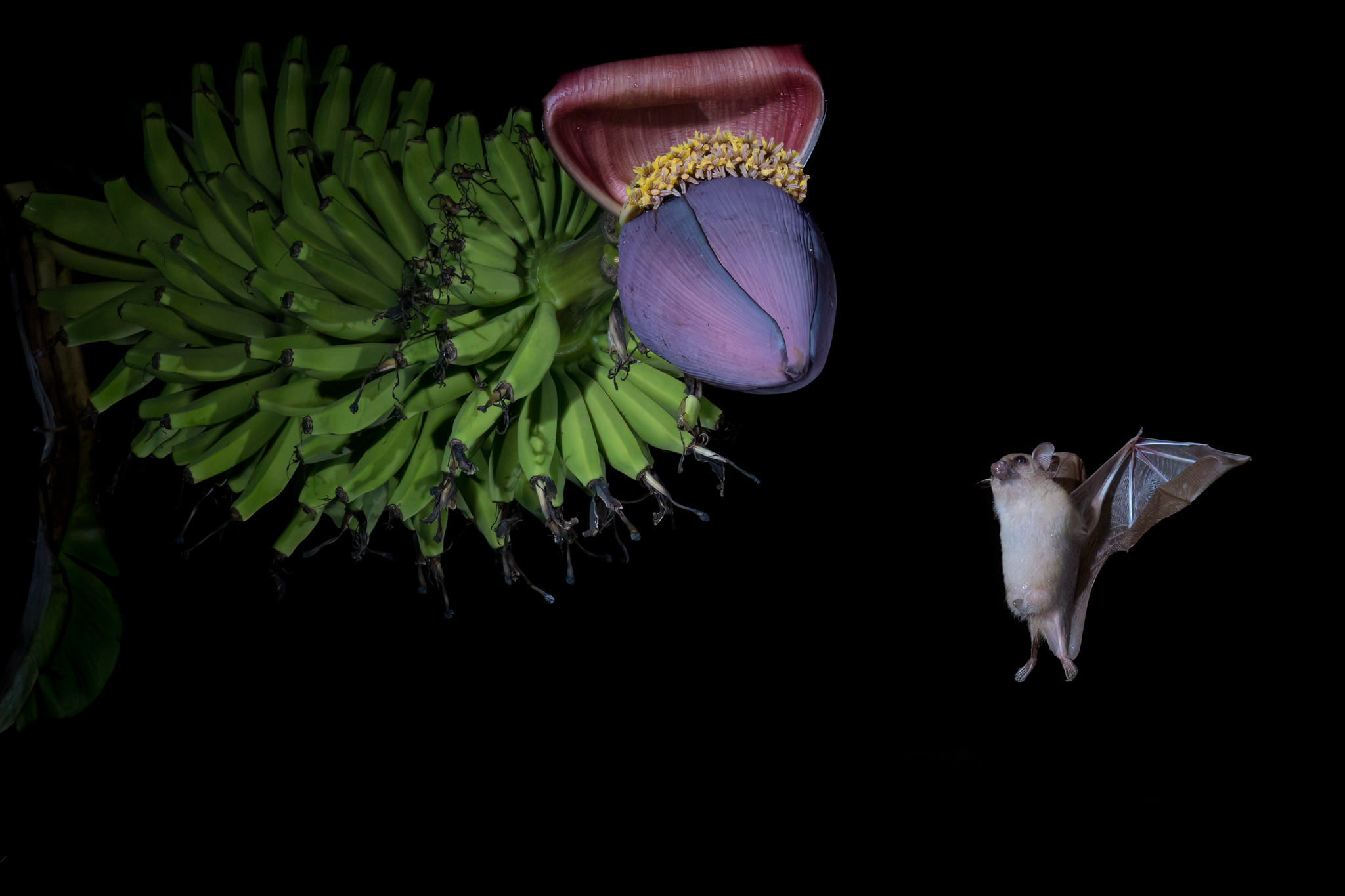
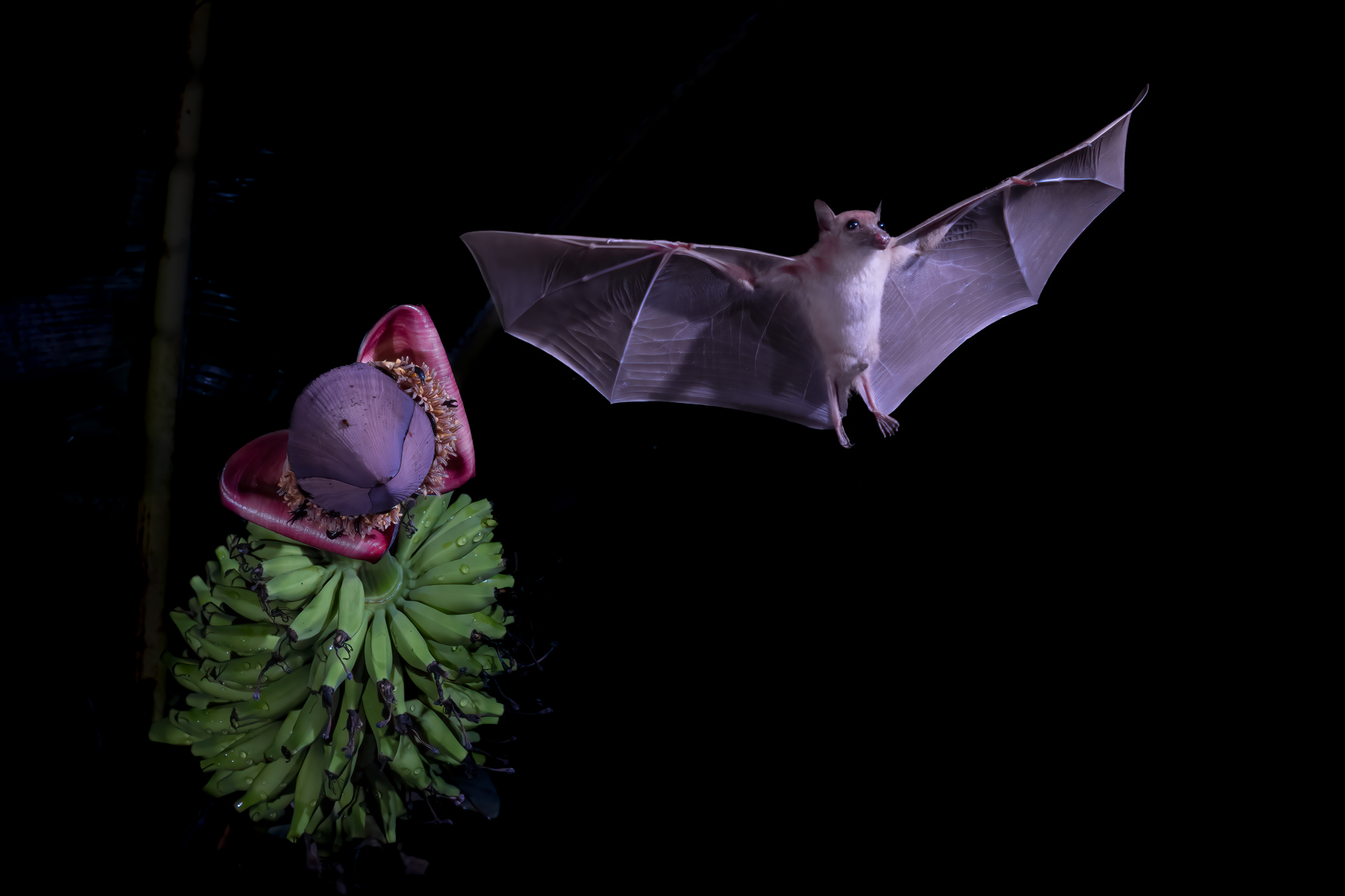
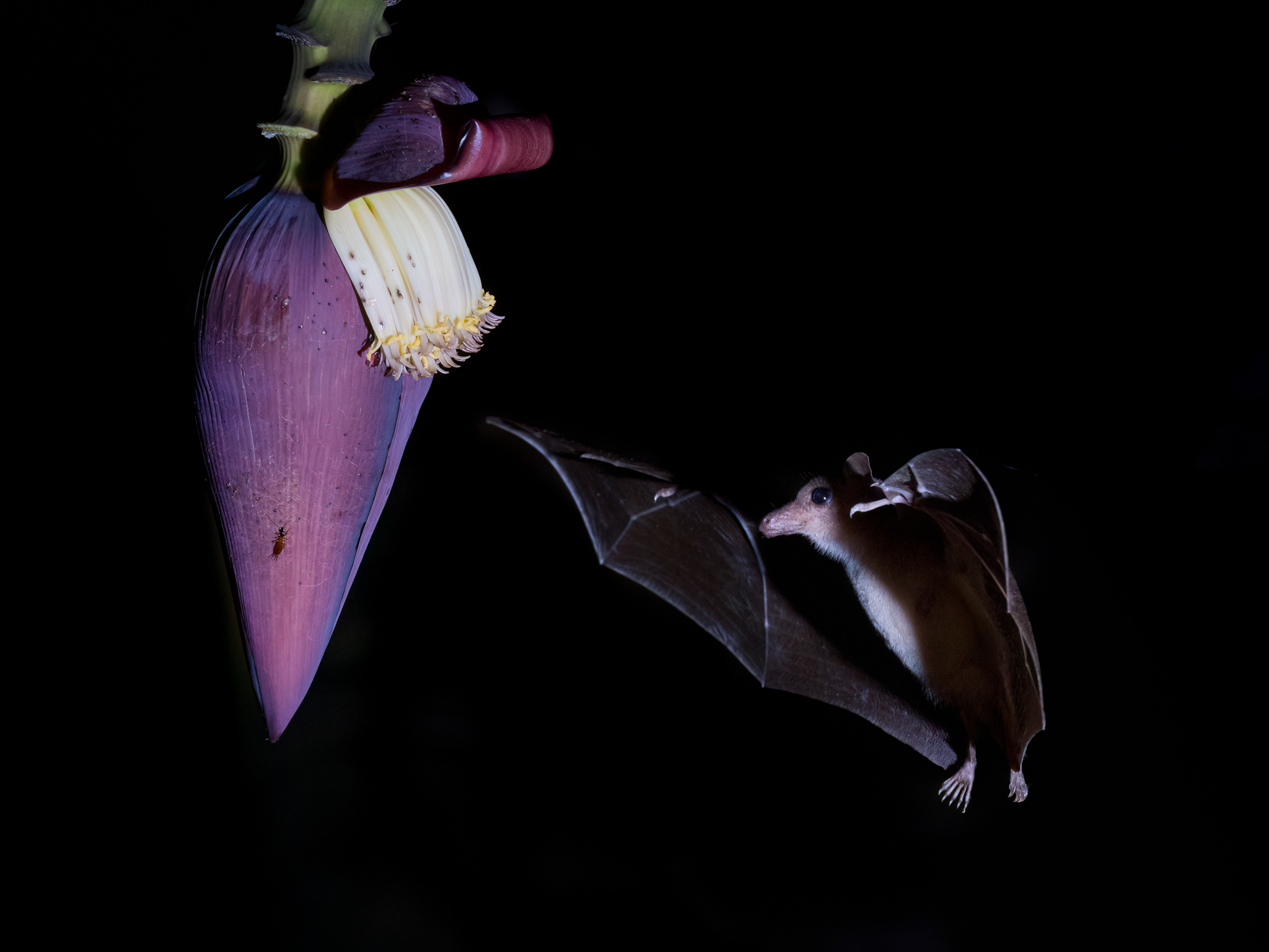
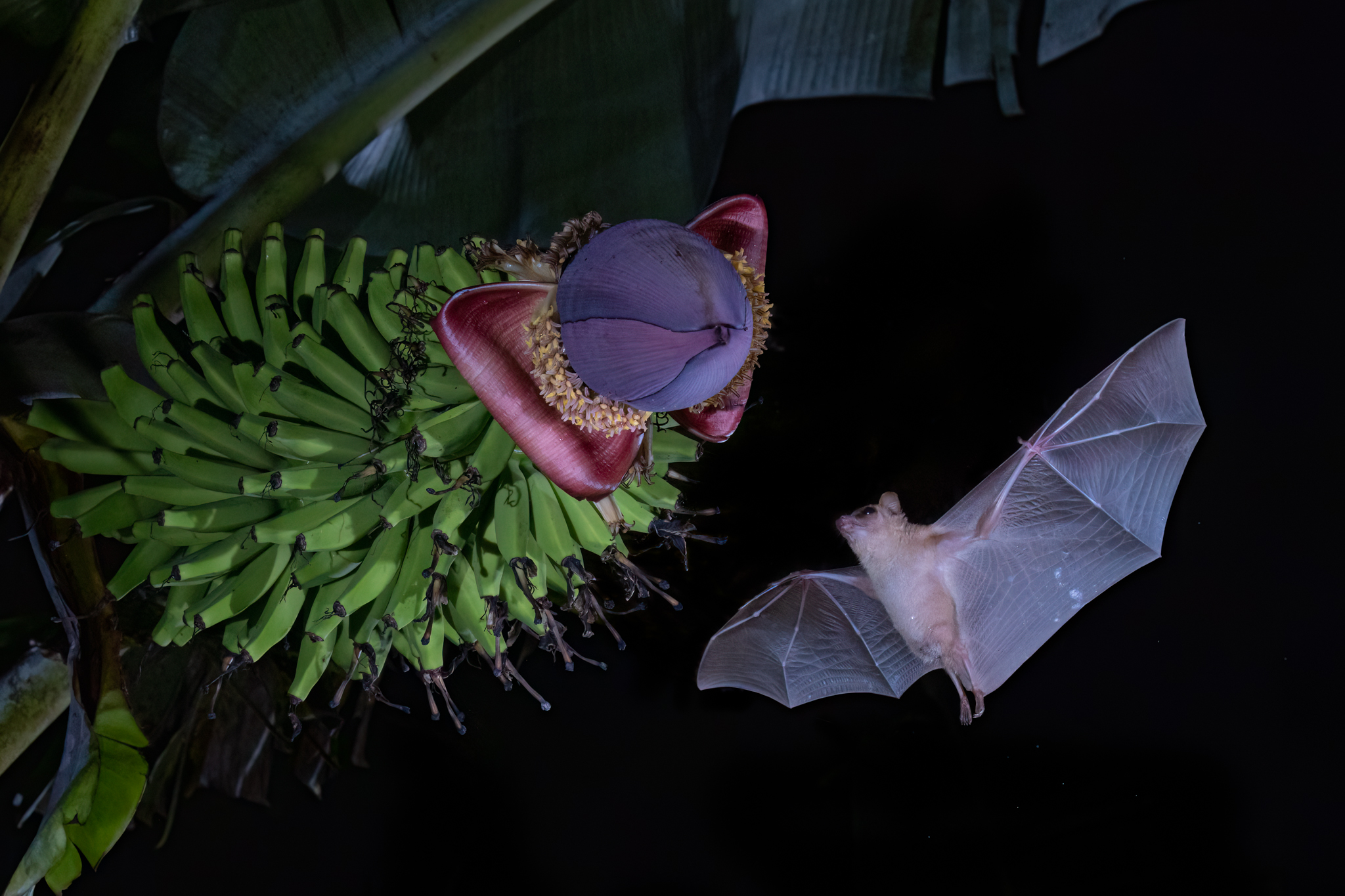
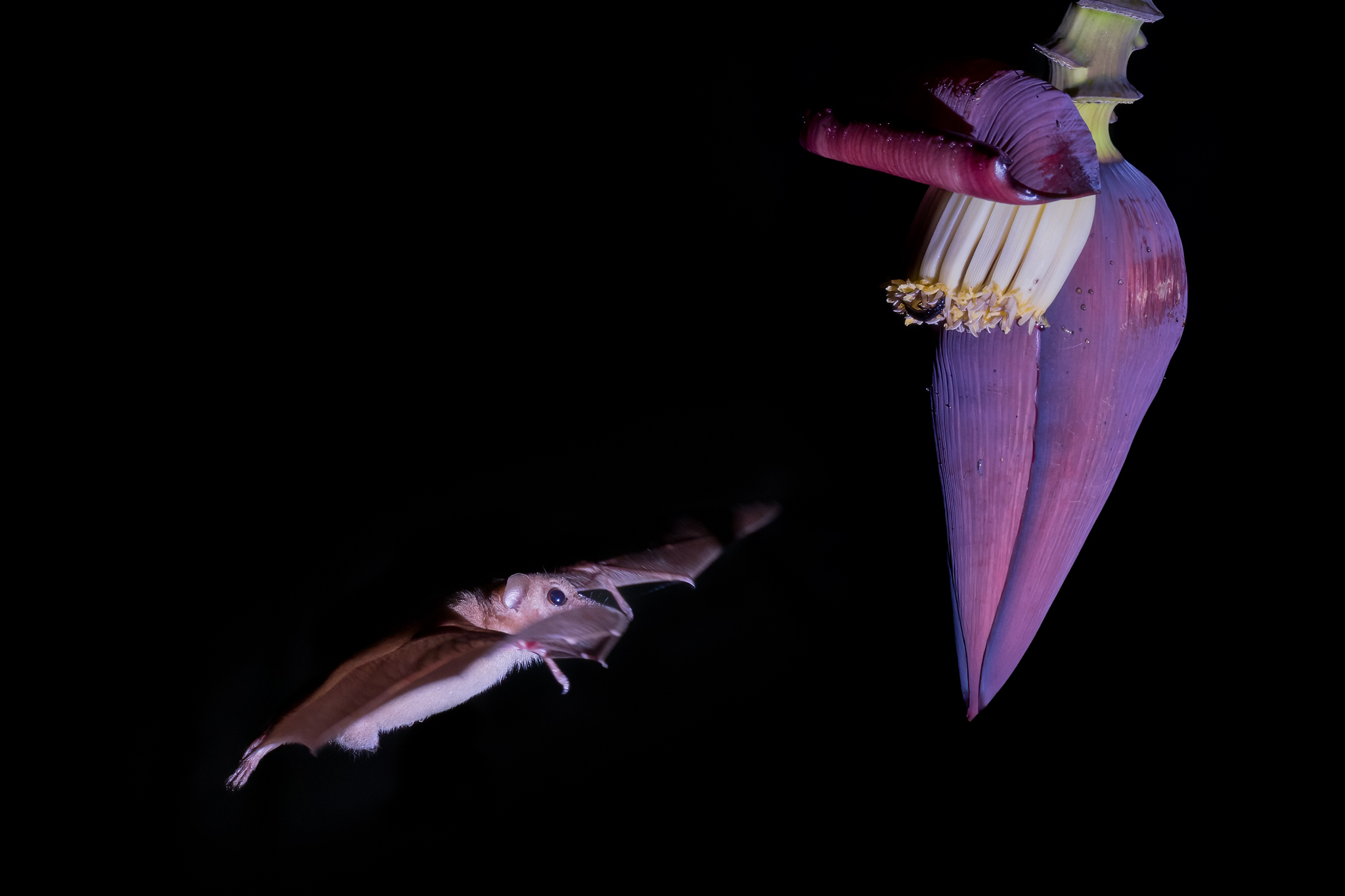
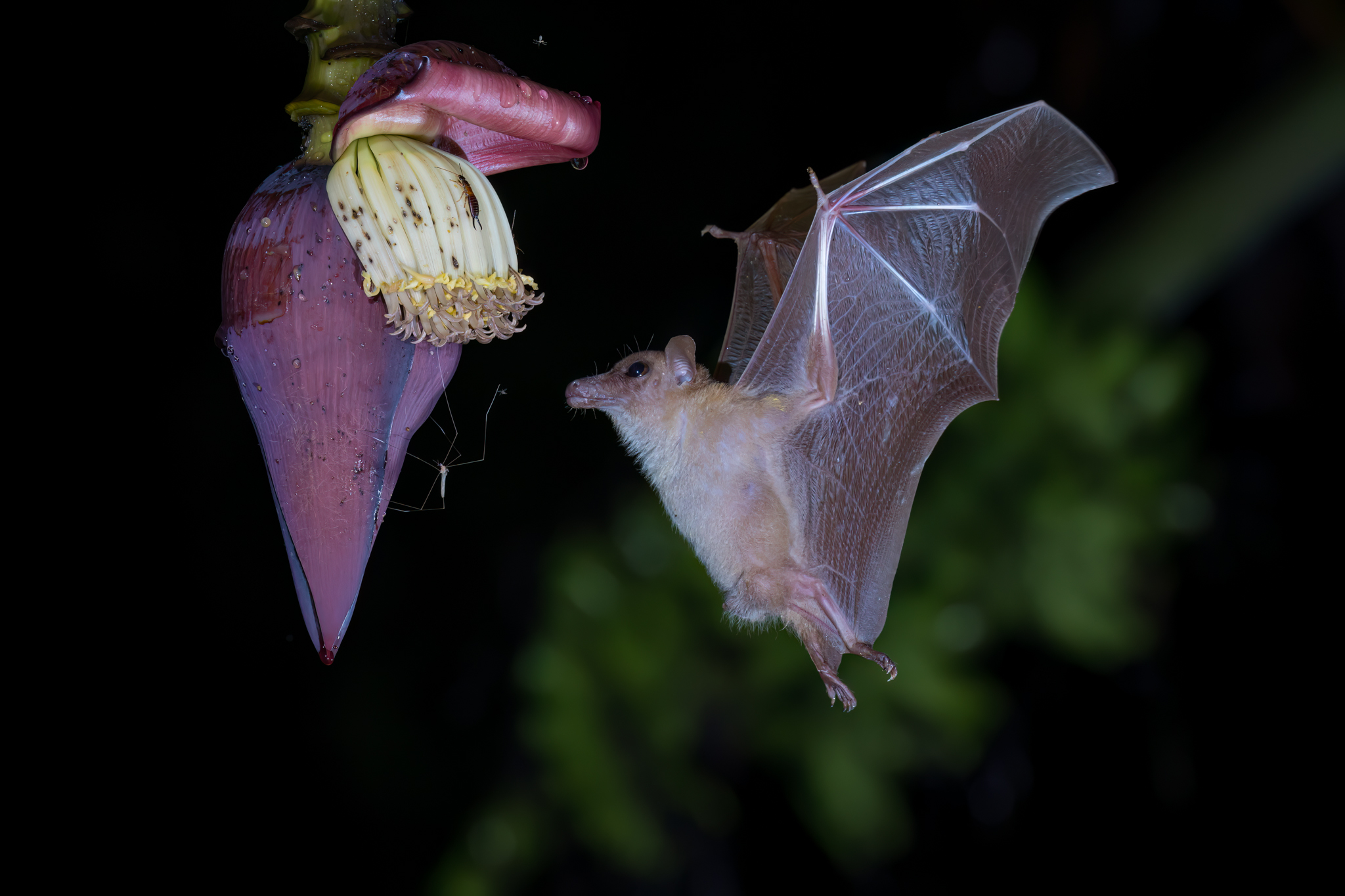
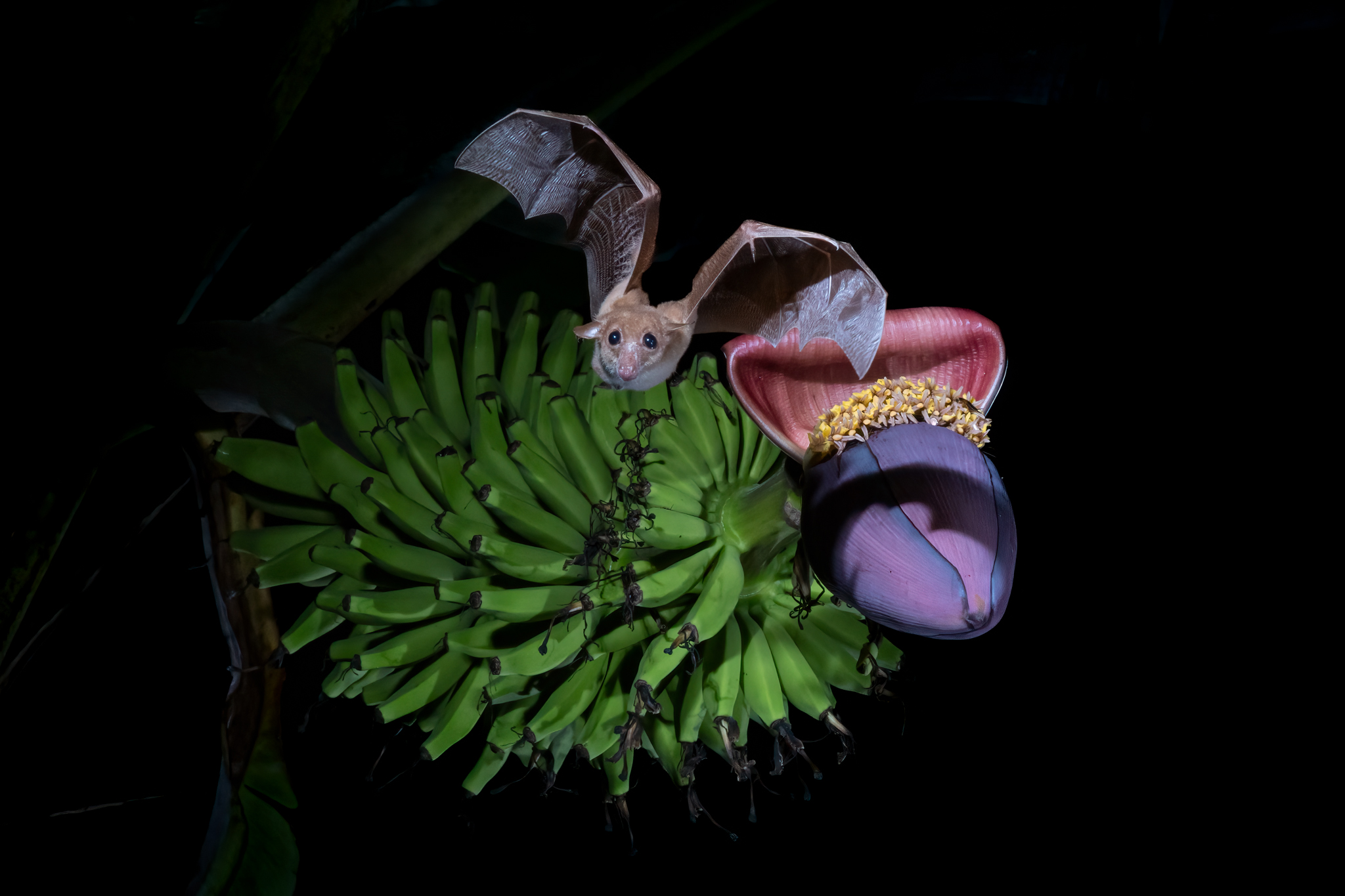
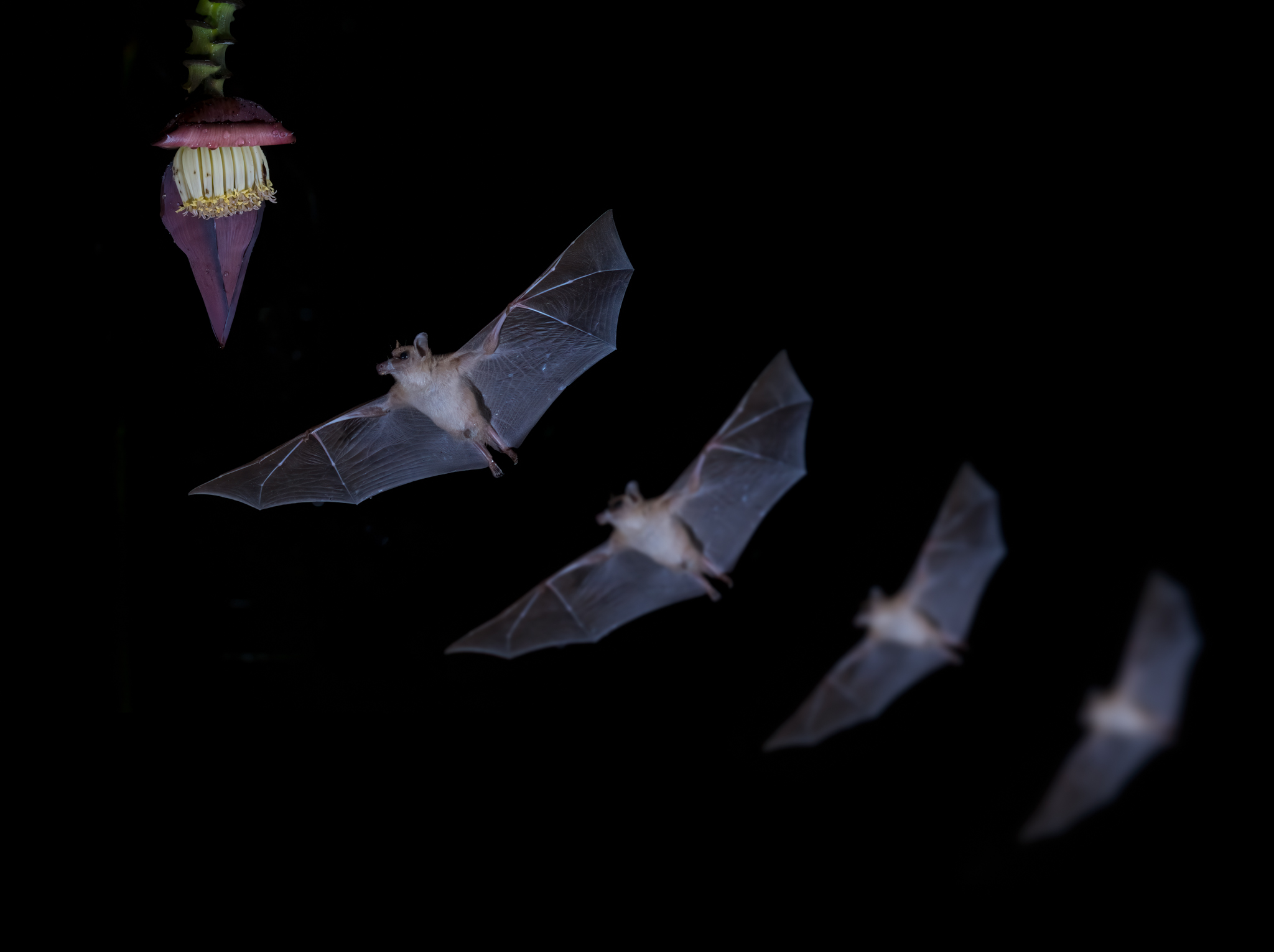
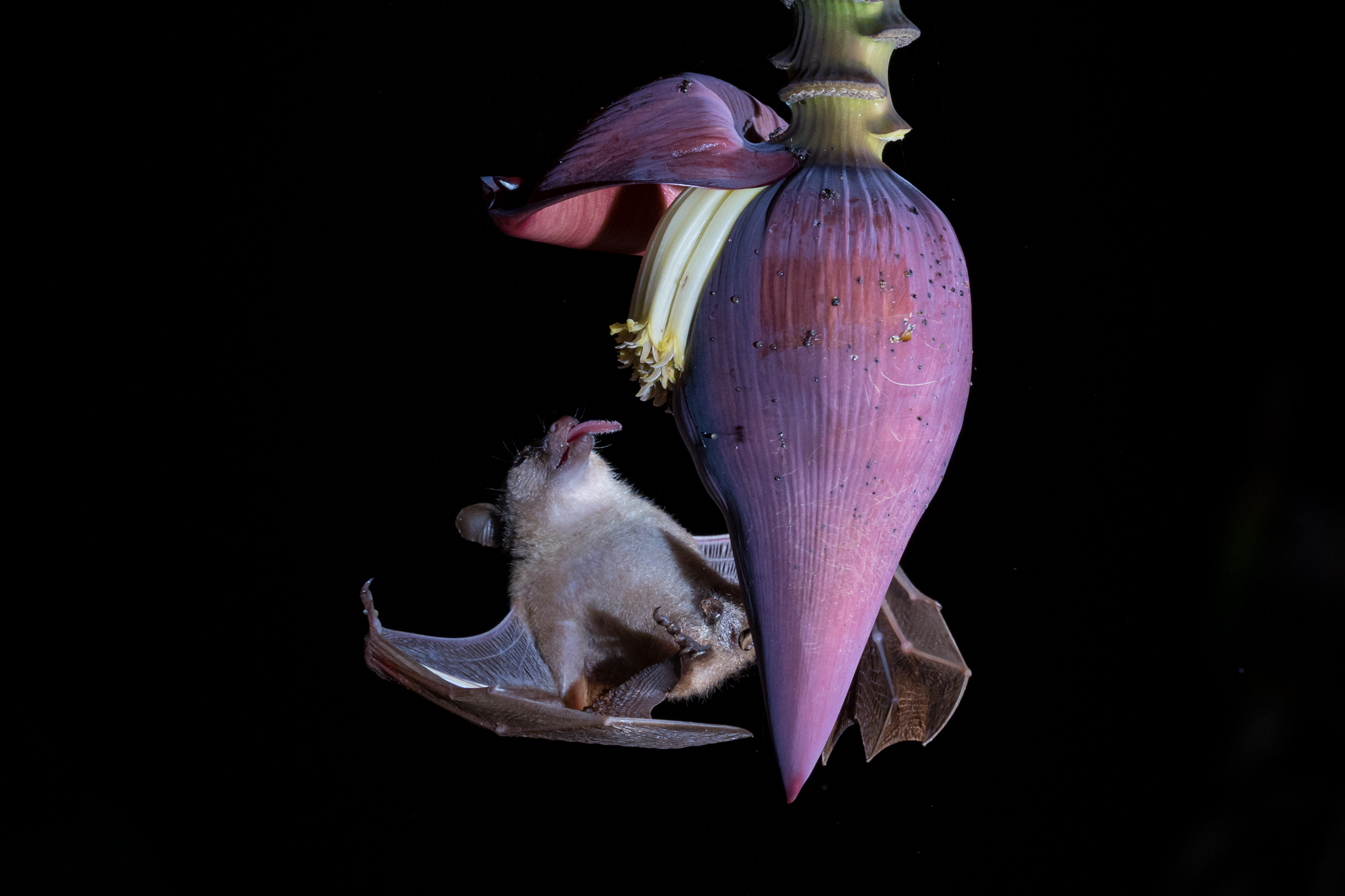

I’m very happy with the results. All together many long nights over a period of 3 months. Perseverance and patience paid off.
Here a short video of my normal set-up; sorry for the relative poor video quality. It’s dark, and phone cameras were not very good yet in low light…
Play Video
Geoffroy's Rousettes fruit bats
We sometimes have other bats in our plantation: Geoffroy’s Rousettes fruit bats. Much larger, and mostly feeding on ripe papaya fruit. They are a lot harder to photograph, as they fly more erratic. Also the background of abundant papaya leaves often creates a lot of clutter in the background. Here some photos. I’m not done with these bats, as I know I can much better. I need more time, and perseverance…
